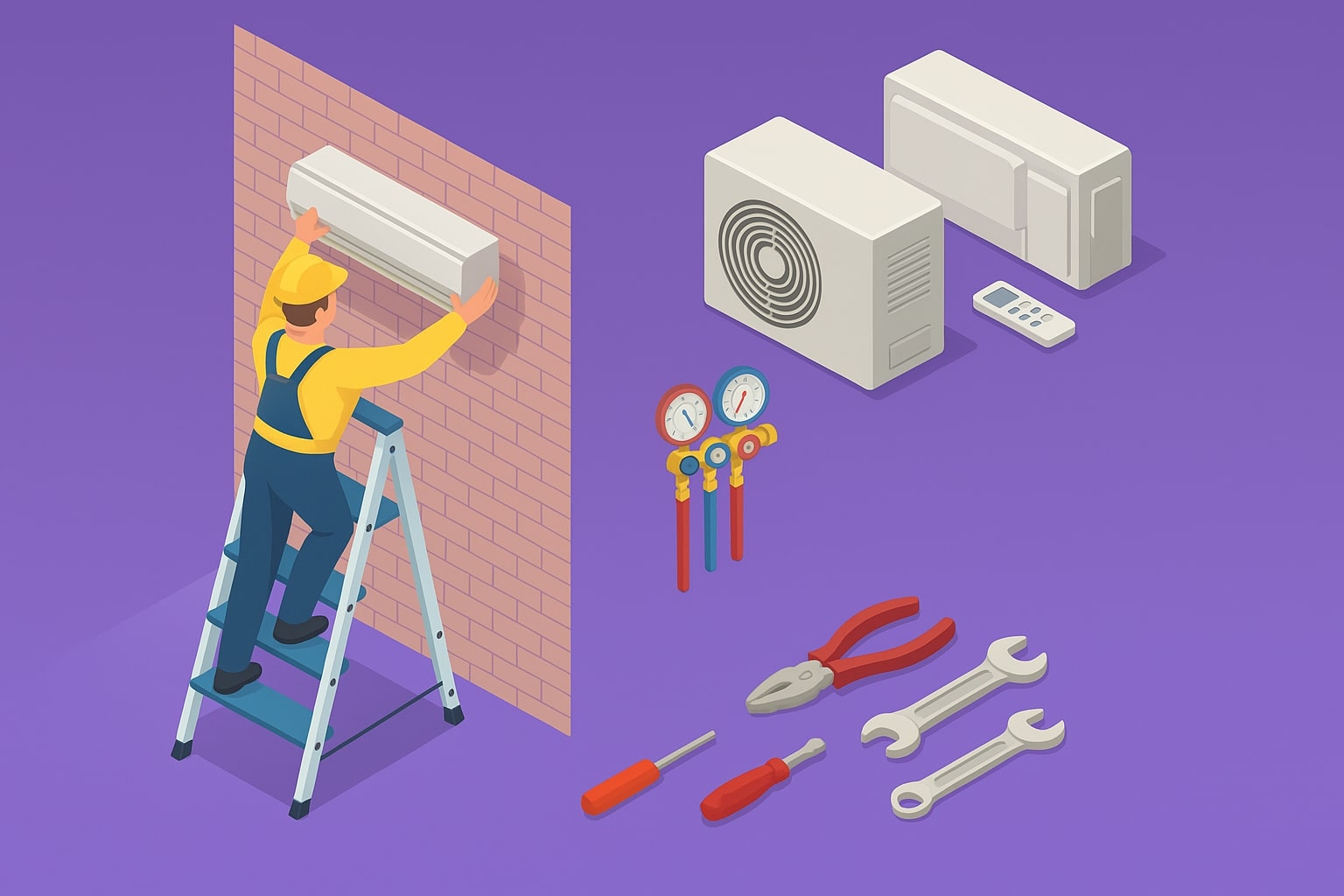
How to Value a Heating and Air Conditioning Business + 15 Factors to Increase Value
Whether you're ready to sell your HVAC business or just assessing its worth, we break down valuation methods and key factors that can increase its value.
The market for transitioning ownership of HVAC companies has long been active – 2020 was no exception. With the entrance of new players, I interviewed several owners and investors to gather some common themes in the industry. Sellers should take note of what investors deem to be valuable, and investors should take advantage of successful strategies.
In past years, our conversations with Business Services investors have typically been focused on commercial HVAC businesses rather than residential. More recently, there has been increased investor interest in residential HVAC businesses due to recurring revenue opportunities and a highly fragmented market. Investors believe that relative valuations of residential HVAC companies (based on multiples of EBITDA) have risen faster than those of commercial. In addition to increased demand driving up valuations, residential HVAC companies have a different work and payment profile than commercial HVAC companies.
As in every sector of the market, multiples are lower for smaller companies. However, attractive acquisitions of HVAC companies at any size can command a premium valuation. Desirability of a seller depends on several factors including the geographical location, the service mix provided, the workforce affiliation to unions and the reputation in the market.
In our interviews, investors were forthcoming with their views on how to successfully consolidate acquisitions. While instituting new financial metrics and system integration are important, there is a qualitative element centered around culture and people that drives effectiveness.
Culture starts at the top. It is crucial that management maintains transparency with all employees by emphasizing the company’s strategy and setting clear expectations. This also includes providing an incentive structure for the sales team and technicians who are successful in expanding customer relationships. Although it is difficult to find skilled labor, hiring the right people makes a difference for the company culture. This should be done in the recruiting process by providing clarity on job purpose as well as offering upward mobility and job expansion for interested team members. All of these factors lead to quality service, which is crucial for maintaining a successful HVAC business.
When pursuing a buy-and-build strategy, two distinct platforms emerged from our discussions. The typical method includes investors who are interested in expanding their geographical service area through acquisition into adjacent counties or states. A more nuanced strategy involves investors who are focusing on a package of “home services,” which combines HVAC with plumbing, electrical, and other maintenance offerings. The goal with this method is to create a one-stop-shop. Not only can this provide a broader customer base, but there are also operational efficiencies from cross-selling.
With active consolidation underway, new and progressive strategies are deemed essential for growth. Brand equity is especially important in the residential and commercial HVAC industry, and tuck-in acquisitions require a focus on strengthening the image. Expansion requires an emphasis on timeliness and quality of service to maintain a competitive advantage. It is equally important to develop a strong customer base through routine maintenance contracts that preserve the quality of the equipment while providing recurring revenue.
While many investors view HVAC companies as an opportunity to double down on the service component, there is also a consumer marketing aspect necessary to drive revenue growth with new customers. This is especially true for residential HVAC businesses where marketing has shifted from radio and mailers to a growing emphasis on social media. Because some of the success for the residential side is dependent on consistent marketing, the brand feeds the valuation as the company grows to new geographies.
Finally, expanding geographically creates an opportunity for servicing and scheduling efficiencies. By focusing on new business around clusters of existing customers, technicians will have organized routes that save on travel time. This hub-and-spoke model not only creates operational fluency, but also improves profitability.
Whether viewed as a platform acquisition, add-on investment or strategic tuck-in, residential and commercial HVAC sellers have an opportunity to take advantage of the highly active market. My expectation is that HVAC merger and acquisition activity will continue its fast pace into 2021, considering the continued opportunities for consolidation coupled with investors’ urgency to invest their plentiful capital.
Brooks Crankshaw is Managing Director of Balmoral Advisors, specializing in working with Business Services companies to sell their business, grow through acquisition, or raise capital. Lillie Ross contributed to this article. Securities offered through Bridge Capital Associates, Inc., member FINRA/SIPC.
